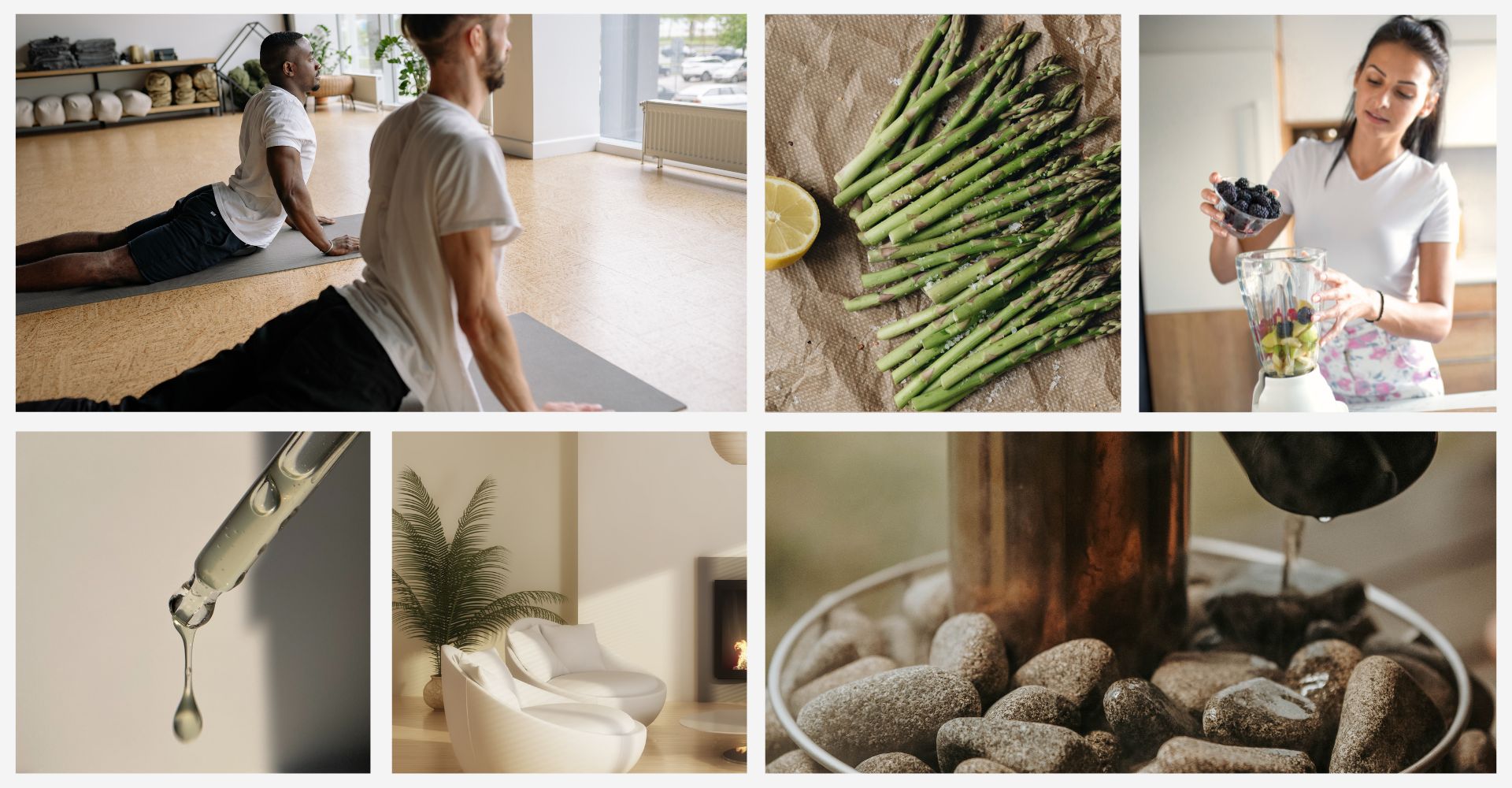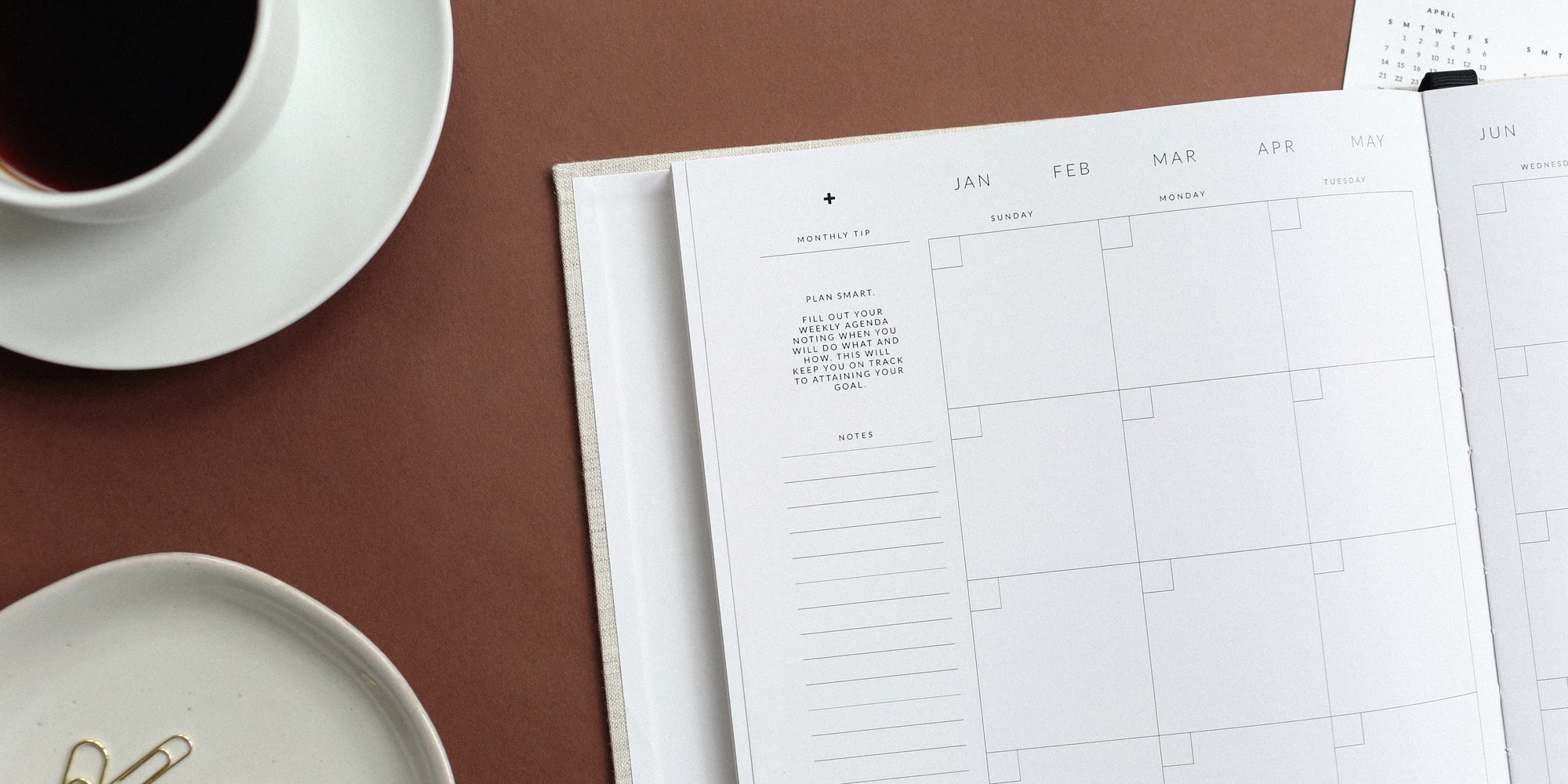How to Select Wellness Brand Imagery that Motivates and Inspires Your Audiences
Support wellness branding with intentional images. Consider these tips to select the right wellness imagery for your brand.
Impactful Photography Supports Wellness Branding & Marketing
Think for a minute about your brand’s ideal multimedia library—the collection of pictures, videos, wellness infographics (and more!) that you want to use to promote your business. Building such a collection may sound daunting and, potentially expensive. Engaging visuals are crucial for wellness brands to connect with audiences and motivate them towards healthier lives.
If you’re unsure where to start, continue reading (or click) for comprehensive tips on how to:
- Quickly select the right brand imagery.
- Know when to use original vs. stock photography.
- Save money with free or budget-friendly stock websites.
- Collect and use user-generated content.
- Justify your photography budget.
- Measure the effectiveness of your visuals/photography.
First: Why Imagery Matters in Wellness Branding & Marketing
The saying, “A picture is worth a thousand words” takes on a new meaning when you consider what your customers see. Here’s how: Whether it’s the photography you use, the color palette you rely on, or the logo that identifies you, brand visuals connect with your audiences and strike an emotional chord in ways that words alone often can’t.
This is especially true in wellness branding, where emotional well-being and healthy living are some of the most personal results any business can sell. The images you use represent who you are and, more importantly, the health potential your audience sees inside themselves. When selected with intention, they can increase new customer acquisition, loyalty and, ultimately, profitability.
To get the most storytelling power from your imagery, curating a consistent imagery style and photography library is essential to reinforce who you are and the results you claim.
Let’s dive into how to select impactful wellness brand imagery!
Save Time: Align Visuals with Brand Personality
To quickly select images that reflect your wellness brand, you should first consider your “brand archetype.” Archetypes run the gamut from innovative to spirited, from empathetic to powerful – with twelve options. The archetype is the starting point for any brand personality, and it serves as a beacon to follow in all aspects of branding – including imagery selection.
Brand Archetypes
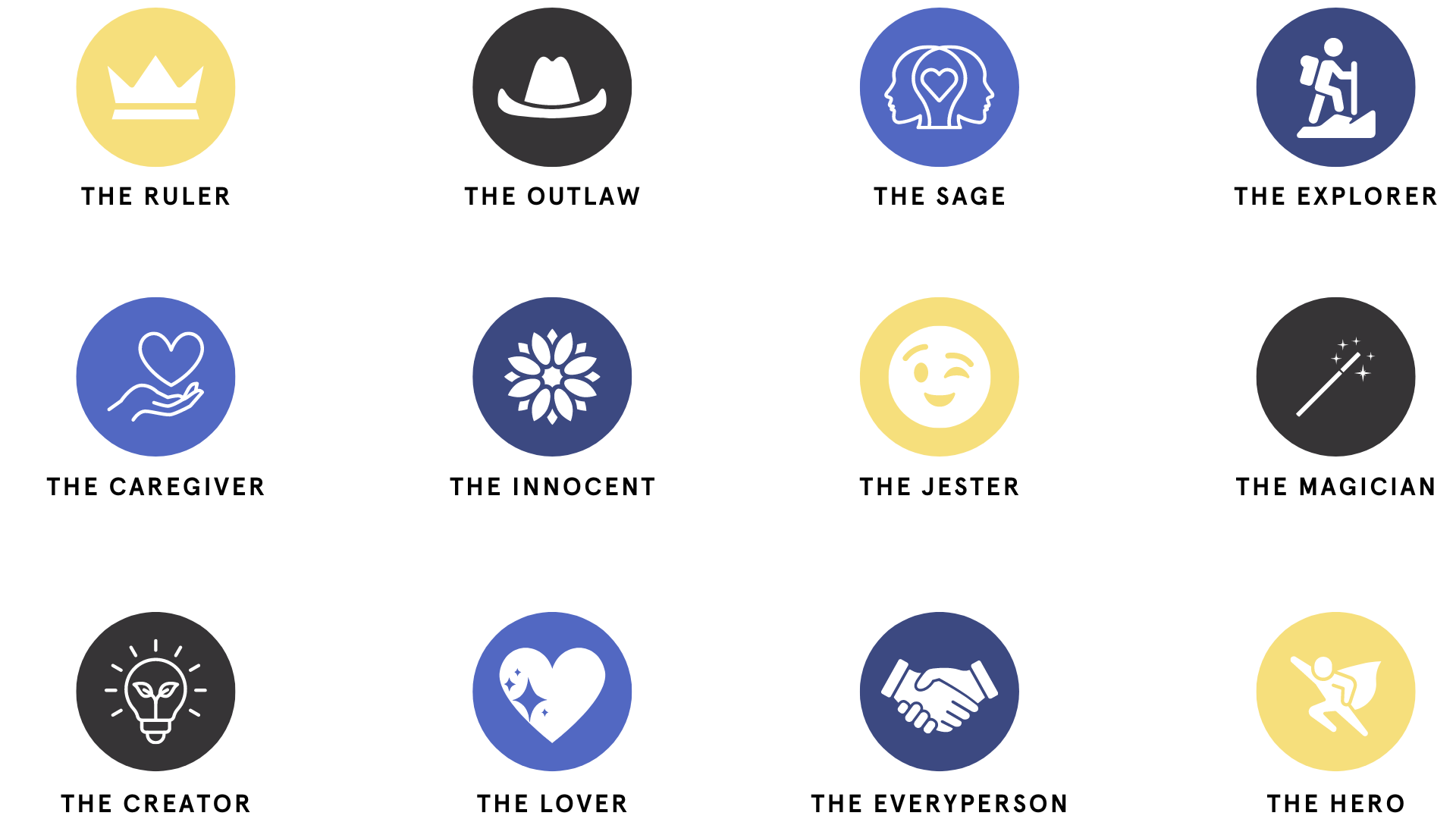
For example, if your brand is the Sage and all-knowing, you will want to avoid whimsical or fluffy visuals. If your brand is the Magician, a common archetype for wellness brands, photos that promise to turn dreams into reality can help you paint this picture in your customers’ minds. Here are Magician brand characteristics that may be helpful to consider when searching for photography:
- Imaginative and memorable imagery supported with inspirational messaging.
- Aspire to dazzle their audience with experiences that inspire confidence.
Wellness brands like Mary Kay, MAC Cosmetics, Lululemon and Factor meal delivery service are standout Magician archetype examples.
It can be hard to uncover and maximize your brand’s archetype alone.
A wellness branding agency can help.
Whether you plan to source images from user-generated content, paid or free stock photo sites or invest in your own photography, understanding your brand archetype places helpful guardrails on which images make the cut.
Our wellness clients have found that authentic brand imagery rooted in their brand archetypes builds trust and emotional appeal with their target audiences.
When to Use Original vs. Stock Photography
You’ve identified your brand archetype—great! Now, it’s time to decide whether to use stock images or invest in original photography. Original photo shoots with a professional photographer allow you to direct every element for complete brand consistency. This results in ownable assets that are unique to your brand. However, they come at a higher price tag and time investment. Stock imagery offers a cost-effective alternative when you need variety or cannot photograph a specific concept.
Each has its place in your marketing program. Prioritize original photography for hero images, product highlights and campaign visuals that will be heavily used on your:
- Website main pages
- Printed sales materials
- Social media
- eCommerce platforms
Supplement with high-quality stock for lifestyle scenes, supporting imagery and visual variety for:
- Website subpages
- Blog articles
- Emails and email campaigns
Tips for Investing in Original Photography & Shoot Cost Management
A single photo shoot can yield dozens of usable images to feed your marketing communications for a year or more! For any photoshoot, we recommend thorough planning and creative oversight ahead of time to get the most out of your investment. This involves mapping out all the possible images needed, the best locations or talent for these images and a process that maximizes talent costs. A wellness branding agency can help coordinate a practical professional photo shoot, creating an exhaustive list of visual assets that maximize your time and budget.
Here are some techniques we use to make the most of our clients’ time and budget.
- Photographers often book by a half-day or full-day. Work with them to develop a shot list that will make the most of the day.
- On-location shoots are almost always more complex and expensive than controlled, in-studio shoots. If you want to save money, you might choose to shoot in-studio and use a quality graphic designer to make modifications to the background in post-edit.
- Once the set is styled, capture short video on your phone to use in future social posts.
- Read your contract carefully! Be sure to require that your images are rights-free with unlimited use.
Teams without an agency or professional photoshoot budget can still benefit from planning. Gather your team to create a shot list and get your smartphone or camera ready! Most smartphone cameras can capture quality images for social media and email campaigns.
Free and Low-Cost Stock Photo Sites
While investing in original photography is ideal for distinguishing your brand, strategic use of stock imagery allows you to build a robust, cost-effective library. Stock photos facilitate diverse visual storytelling to complement your core creative assets. However, finding the right stock resources and evaluating proper usage requires some guidance.
Free stock photo sites like Pexels and FreePik are great options for tight budgets. They offer a wide variety of high-quality photos without any costs. However, free images typically have more limited usage rights than paid options. For example, you might not be able to use them on your website. Free photos are also available to anyone, limiting your ability to have a truly unique look.
Paid stock sites like Adobe Stock and iStock provide more exclusive content but often require a monthly or annual subscription fee. The higher cost gives you access to photos fewer competitors will use.
Whichever route you take, carefully vet any stock asset's artistic quality, technical resolution and authenticity. Avoid images that look staged or utilize tired clichés about health and wellness.
Take these “healthy eating” stock photos, for example. The one on the left is overly stylized and doesn’t encourage audiences to see themselves eating well—there’s nothing to connect them to the image. The right image, however, is much richer, bringing emotion and human connection to eating well.


We recommend choosing photos that feel natural while portraying the lifestyle and diversity representative of your target audiences. By carefully picking from free and paid resources, you can create a unified, on-brand look for your photos without breaking your budget.
Collect & Leverage User-Generated Content
User-generated content is another route for authentic photography that appeals to audiences. As defined by Hootsuite, “User-generated content (also known as UGC or consumer-generated content) is original, brand-specific content created by social media users and published on social media or other channels. UGC comes in many forms, including images, videos, product reviews, a testimonial, or even a podcast.”
Depending on your overall visual approach, your customers can help you build your image library. You can leverage your social media channels to promote sharing through contests and collaborations with loyal customers and influencers. At Muse, we’ve helped our wellness clients maximize the possibilities of UGC in ways that still align with the tone they’ve set for their brand.
Here’s an example of UGC we collected and presented to our client, Ohio Apples. An apple orchard customer took the photo and then we reposted it on the Ohio Apples Instagram account.
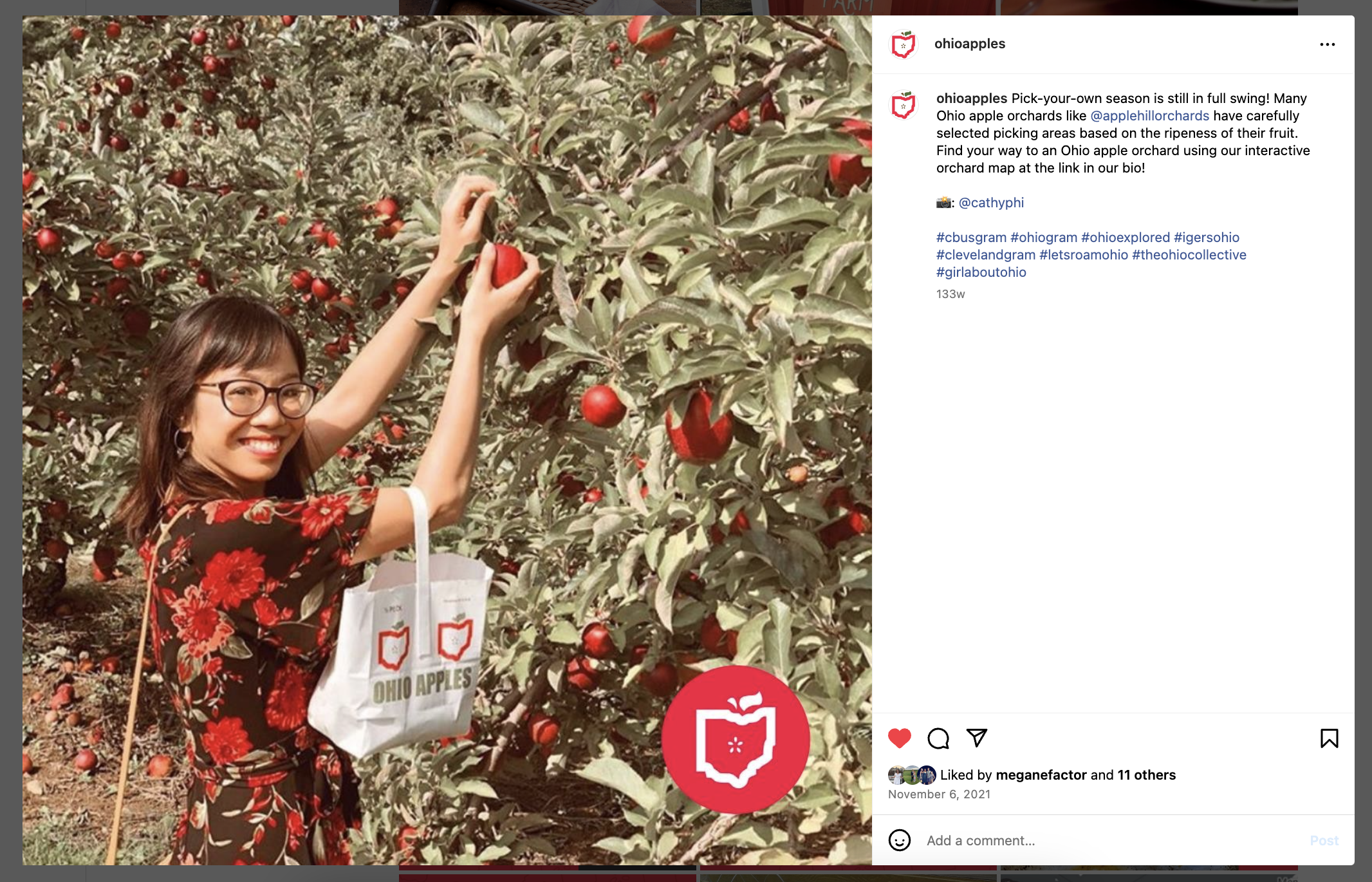
Once you’ve gained permission to share users’ content, fill your feed, email campaigns and more with authenticity that speaks directly to your audience!
How to Justify Your Visual Budget
If you're part of a wellness brand marketing team, you'll likely need to justify visual asset investments to leadership. While quality photography requires an upfront budget, it delivers compounding returns by elevating your brand awareness, customer acquisition and retention rates. Intentional, on-brand imagery doesn't just make your marketing materials look good - it reinforces your brand personality, anchors integrated campaign concepts and provides authentic glimpses into the healthy lifestyles you promote.
We’ve helped marketing teams approach difficult conversations on this topic. It’s helpful to approach the conversation by quantifying the potential uplift in critical metrics tied to consistent, impactful visuals like:
- Increased engaged sessions on your website
- Higher email open rates
- Better social engagement
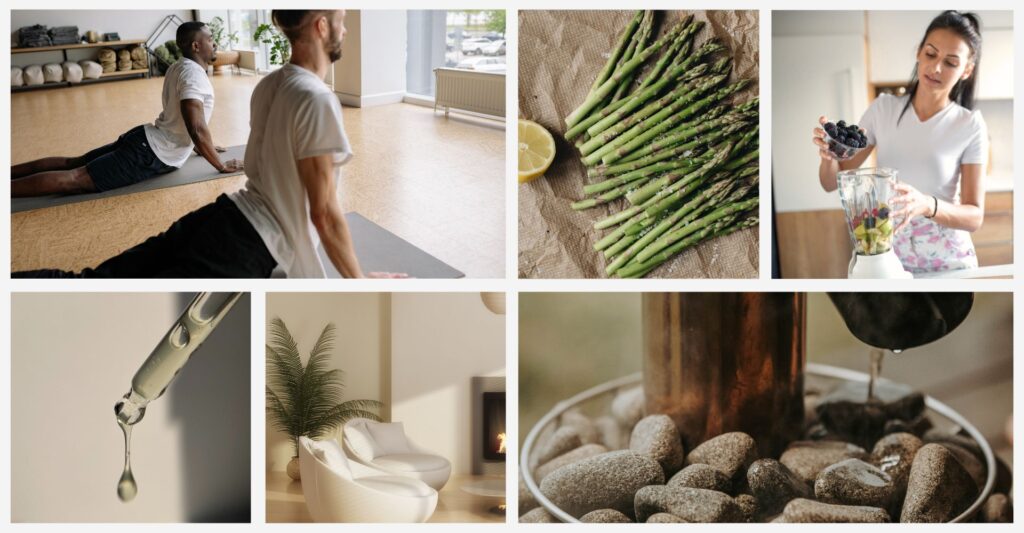
Strategic imagery speaks volumes and can deliver impactful results
You can also outline the opportunity cost of not investing, like getting lost among competitors or struggling to capture audience attention. With clear data demonstrating the potential ROI of professional branding photography, a modest budget allocation for an on-brand multimedia library becomes an easy sell. Vivid, emotionally resonant visuals cement lasting brand recognition and loyalty far beyond their initial production costs.
To measure the effectiveness of your visuals and justify ongoing investment, implement rigorous testing and monitor performance metrics closely. Consider these options:
- A/B test different photography styles, product shots and branding visuals that are used in paid digital marketing.
- Track quantitative metrics like click-through rates, bounce rates, conversions and social interactions.
- Layer in qualitative voice-of-customer data through user surveys, focus groups or social listening.
This blended approach will reveal which specific visual elements and styles resonate most with your audiences. Then, it’s easier to make informed, optimized future photography investments.
Effective Wellness Branding Requires the Right Photography
Your brand imagery is a critical tool in your marketing and communications arsenal. Invest in it wisely, and it will pay off with brand awareness and customer loyalty that builds year after year. Want to learn more? As an experienced wellness branding agency, we can help you pinpoint the tools that will work best for your needs. Contact us to learn more.
ABOUT THE AUTHOR
Megan Factor is a Content Manager at Muse and a passionate creator, both professionally and personally. She developed her content marketing skills working in a wide range of industries and pulls inspiration from her diverse experiences. Her keen eye for design, penchant for writing, and love of good storytelling work together to create meaningful content that provides value to clients.

